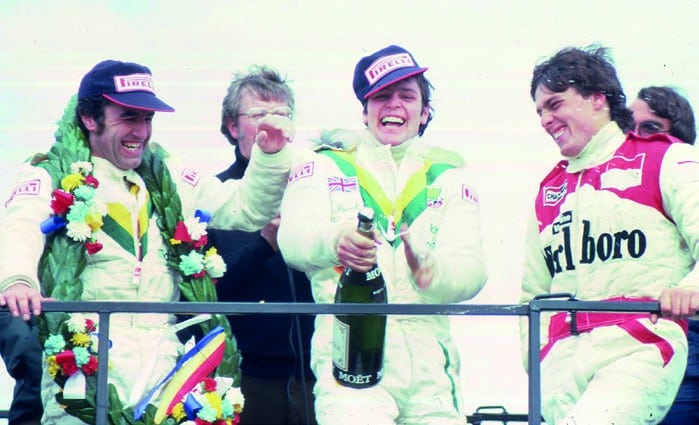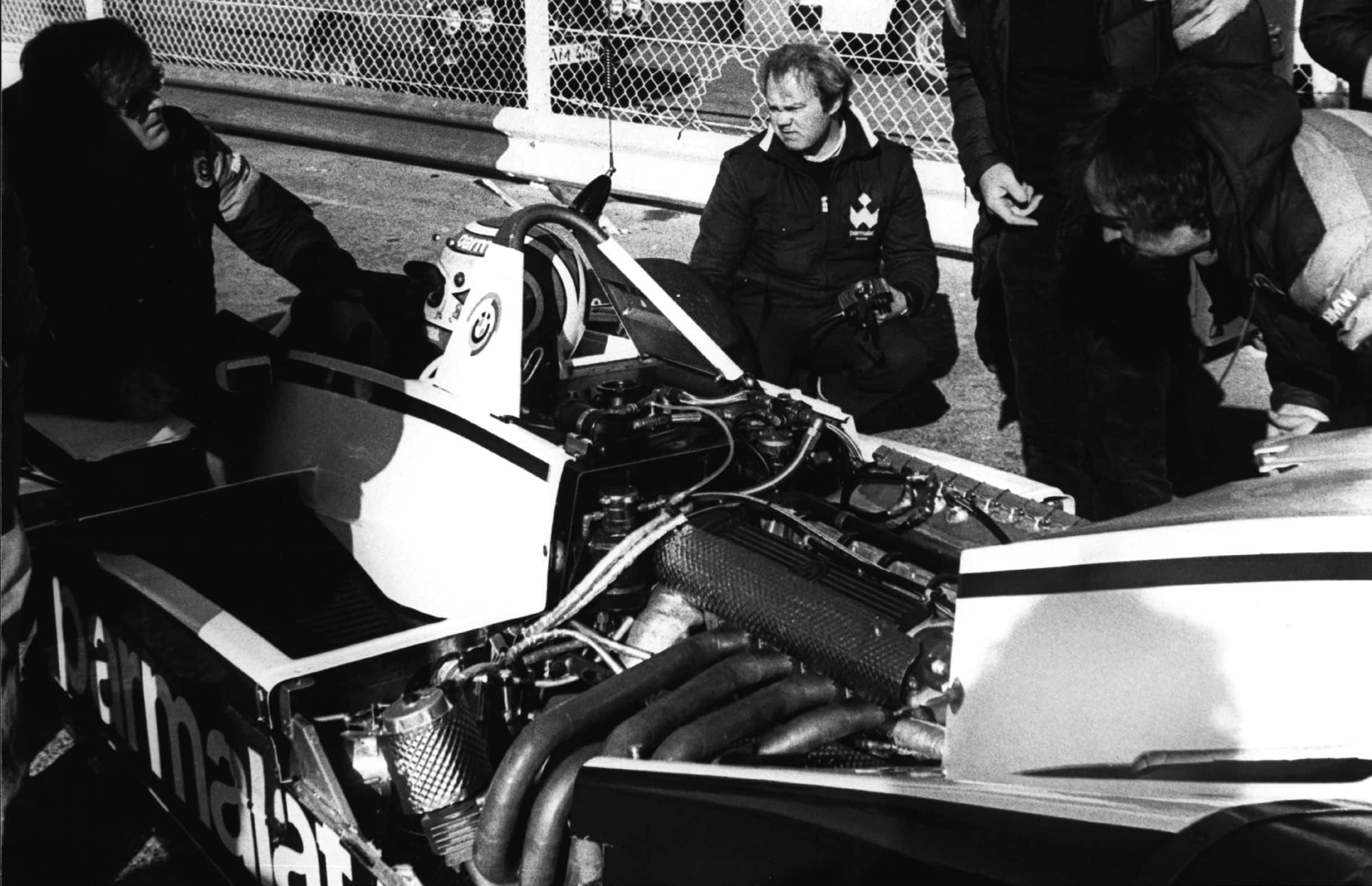Motor Sport Letters, March 2021
In December’s issue Mark Hughes talks about the engine used by Nelson Piquet in qualifying and, as it turned out, the race at the 1980 Canadian Grand Prix. Over the years I have read speculation about this engine and am writing to clarify the issue.
In 1980 I was an engine builder with a first-rate company specialising in rebuilding DFVs, and was entrusted with building this particular engine. The engine was DFV 318 and was standard in every way apart from the pistons. Usually we used Cosworth pistons but on this occasion we fitted semi-slip ones made by another manufacturer, which improved the performance on the dyno by around 5bhp. However, as the article correctly states, they were known to be fragile and incapable of lasting a race distance but as it was a qualifying engine they were not required to.
The engine did not have a higher compression ratio as has been speculated. I built the engine to the specification laid down by my supervisor so all credit must go to him or whoever advised him for using different pistons, as they did indeed improve performance which, in turn, helped Nelson Piquet secure pole position for the race.
Les Badham, by email

Making a splash – Derek Warwick celebrates with Brian Henton and Andrea de Cesaris
I enjoyed Chris Witty’s article about the 1980 Toleman Formula 2 team [Band of brothers, February]. I was at the opening round of that year’s European F2 Championship at Thruxton, where there was eager expectation as Derek Warwick was our local driver on our local track. We had cheered him on when he was in the 1978 BP Super Visco F3 Championship, particularly as he had won the first two rounds for his Warwick Trailers Team at Thruxton. That is not to say that we didn’t support Brian Henton too, as he had been notably successful at Thruxton.
The pristine TG280s were the centre of attention in the paddock. As mentioned, Toleman’s Pirellis suited the abrasive Tarmac and Henton cruised to a relatively easy win.
My photo (above) shows Derek exploding the champagne watched by Brian Henton and Andrea de Cesaris. For all us locals it was a great spring day to celebrate… and we did!
Bruce Grant-Braham, Wimborne, Dorset
Thank you for the excellent article on the Toleman F2 team. I was pleased to read that Brian and Derek’s competitive spirit still thrives. Like several British drivers of the period I’m sure Brian could have made it to the top in F1 with the right opportunity but being in the right team at the right time is always crucial.
I was always a fan of Brian Hart both as a driver and engine builder and I would like to suggest a small correction regarding the 420R. F2 rules up to the end of December 1975 required stock blocks so Hart engines up to then were based on the BDA dimensions and referred to as 420S. From January 1 ’76 the 420R, based on a stretched 420S, with jackshaft-driven oil pump and distributor, was introduced. For 1977 Hart produced an updated engine with a belt-driven DFV-type oil pump and crankshaft-triggered ignition which continued with various external differences until the end of the formula.
Jim Evans, Richmond, North Yorkshire
I write in response to Nigel Roebuck’s inspired piece in December [1967: The Summer of Love]. I found myself drawn time and again to the iconic shot of the German GP starting grid, and it dawned on me just what a totemic picture it is. On that grid are the reigning world drivers’ champion, three former champions and three future champions. Collectively, over a period of 15 years, they won 13 drivers’ titles.
Of the 16 F1 drivers on the grid, no fewer than 10 had already won at least one championship GP. Two more went on to do so, as did one of the F2 drivers. Three of the F1 drivers were also F1 constructors. Three more went on to become F1 constructors. All seven of the F1 constructors represented on the grid had won GPs; one of the F2 constructors went on to do so the following year. The seven constructors used seven different engines, four of 12 cylinders, two of eight and one of 16.
Tragically, of the 27 drivers on the combined F1 and F2 grids, no fewer than nine subsequently lost their lives in motor racing accidents, and the promising career of a tenth was ended by a serious accident. Nineteen sixty-seven truly was a different country.
David Coker, Great Easton, Leics
I get frustrated at seeing the same mistake made by even the best F1 writers, this time in your December issue by Nigel Roebuck [1967: The Summer of Love]. When emphasising how much heavier current F1 cars are than those of the past, they quote the current minimum weight as if it could be directly compared to the earlier ones. But the minimum weights before 2004 did not include the driver; since then they have. And now that weight for driver and equipment has to be 80kg. So when a writer compares a 1967 car to a current one, he should subtract that 80kg, making it 500kg then compared to 666kg (not 746kg) now. Yes, the current cars are heavier, but not that much heavier. I would really like to see this accurate comparison become the norm, because I think the current F1 cars, although heavy, are quite magnificent, and hate to see them repeatedly caricatured.
Steve Bieler, Richmond, Virginia, USA

Nelson Piquet’s pole position at the 1980 Canadian GP raised eyebrows over his engine spec. Yet the engine was virtually standard, says our correspondent
Regarding Steve McQueen and Day of the Champion [McQueen’s Lost Movie, February], the images you describe as the Alan Mann workshops were, in fact, the Brabham production shop. I had been working there since 1963 but the staff at Brabham were rarely informed about anything that might take place, and such was the case when McQueen and Moss appeared. As you can see from the state of the workshop we were unprepared for the visit.
I recall the occasion but very little detail except being told to down tools and keep quiet. We were well used to celebrities visiting the workshops but they rarely spoke to the staff and this occasion was no different. After a few hours they all left and it was barely referred to ever again. I regret not getting McQueen’s autograph!
Nick Goozee, Dorset
Having read the Steve McQueen article, I recall being a marshal at the Oulton Park Tourist Trophy meeting in April 1966. I was at the first corner, Old Hall, when Steve McQueen wandered down from the pits and told us about his plans for the forthcoming film Day of the Champion and how he hoped to do some filming at Oulton.
I remember we marshals were somewhat awestruck having not so long ago seen two of his recent films – The Great Escape and The Cincinnati Kid.
Michael Cookson, Audlem, Cheshire
Have just read the local heroes feature [January] and disappointed that Johnny Herbert’s victory at the 1995 British Grand Prix was missing. I know he was lucky, but didn’t that victory make him a local hero, even if only for just one day?
Andrew Andersz, Aston Clinton, Bucks
It was a pleasure to read about Derek Ongaro [Flashback, January], an understated man who made a significant contribution to safety in motor sport back in the ’70s and ’80s. One of his notable achievements was that he was pivotal in setting up the licensed rescue unit system. It would have been rare for Derek not to be at a motor sport event at weekends. The man who had travelled the world as Formula 1 circuit inspector and starter was equally happy at any grass roots race meeting. Derek’s style was to quietly discuss ideas, but he was no pushover; he also had a steely determination. And who knew he was also a very accomplished artist and fisherman? Or that he had competed in motorcycle circuit racing as a sidecar passenger, something he certainly kept quiet about!
The February issue mentioned Martin Birrane [For sale: Lola, two careful owners], a self-made man, fiercely competitive, and a true enthusiast who achieved a huge amount in racing but also quietly helped people. When Martin purchased Mondello Park, I asked him why. His answer was simple: “It’s a race circuit, it’s in Ireland and if I don’t it will die.”
He financially supported the Pacific Formula 1 initiative simply because he liked to support those having a go in motor racing. A number of promising young drivers received help from Martin, not with overt sponsorship but behind the scenes financial help and sage advice.
Two guys I was lucky enough to enjoy long-term friendships with. Motor sport is all the better for their contribution.
John Symes, Orpington, Kent
Thank you for running the article about Brian Joscelyne’s photograph archives [Racing through Europe, January]. A couple of errors crept into your brief biography though. Brian almost always used his Pentax camera for his colour photographs, and as far as I’m aware never owned a Leica. Although Palawan Press concentrates on his photographs from the 1950s-70s, he continued to take amazing photos until the late 1980s when he switched to moving images, like his father Hilton had before him who took colour cine film at Brooklands, before World War II.
Brian also continued to attend race and car meetings all over England and Europe until just a few years ago. Returning home in 2008 after yet another memorable Le Mans trip, the ever-enthusiastic and youthful Joscelyne captured some remarkable images of the Aston Martin factory DBS demonstrator, probably the last still images ever taken by him, as he was then exclusively using video.
He passed away peacefully at home just days after seeing a copy of the book, but will never be forgotten thanks to the amazing legacy of his colour images.
Dr Brian Kent, London W1
Write to Motor Sport, 18-20 Rosemont Road, London, NW3 6NE
or e-mail, [email protected]
